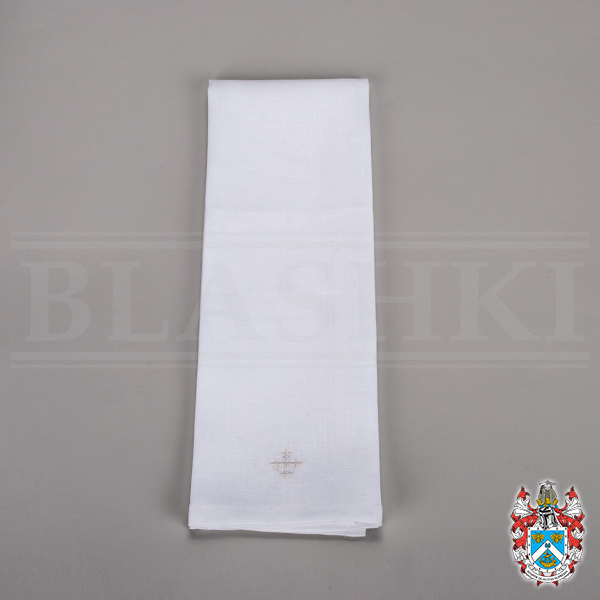Description
P Blashki & Sons are not only manufacturers but also suppliers of high quality regalia and have been for over 160 years. In addition, we proudly offer this Purificator.
Regalia is manufactured by our highly qualified staff in Melbourne. In addition, we use only the finest quality fabrics available.
The purificator (purificatorium or more anciently emunctorium) is a white linen cloth, used to wipe the chalice after each communicant partakes, as well as to wipe the chalice and paten after the ablutions which follow Communion.
Approximately 12-14 inches square
Has a small cross embroidered in white thread in one corner



